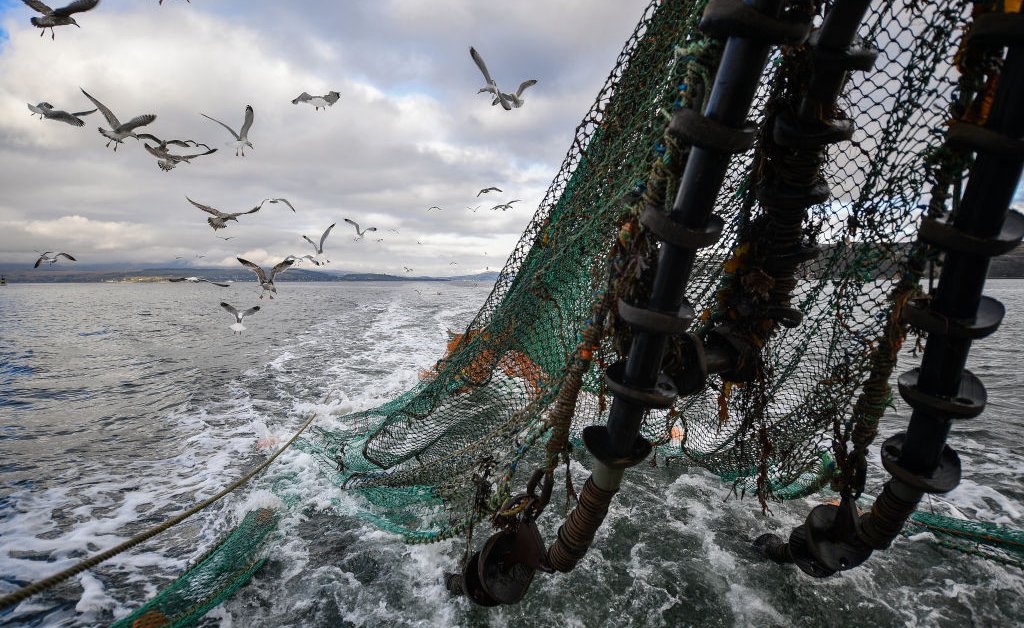Using AI To Monitor And Preserve Ocean Ecosystems

Welcome to your ultimate source for breaking news, trending updates, and in-depth stories from around the world. Whether it's politics, technology, entertainment, sports, or lifestyle, we bring you real-time updates that keep you informed and ahead of the curve.
Our team works tirelessly to ensure you never miss a moment. From the latest developments in global events to the most talked-about topics on social media, our news platform is designed to deliver accurate and timely information, all in one place.
Stay in the know and join thousands of readers who trust us for reliable, up-to-date content. Explore our expertly curated articles and dive deeper into the stories that matter to you. Visit Best Website now and be part of the conversation. Don't miss out on the headlines that shape our world!
Table of Contents
Using AI to Monitor and Preserve Ocean Ecosystems: A New Wave of Conservation
The ocean, covering over 70% of our planet, is a vital ecosystem facing unprecedented challenges. From climate change and pollution to overfishing and habitat destruction, the health of our oceans is deteriorating at an alarming rate. Traditional monitoring methods are often slow, expensive, and limited in scope. However, a new wave of ocean conservation is emerging, harnessing the power of Artificial Intelligence (AI) to revolutionize how we monitor and protect these crucial underwater worlds.
AI: A Game-Changer for Ocean Monitoring
AI offers a powerful suite of tools to address the limitations of traditional ocean monitoring. Machine learning algorithms, a subset of AI, can analyze vast quantities of data from various sources far more efficiently than humans. This includes:
- Satellite imagery: AI can analyze satellite data to identify changes in water temperature, chlorophyll levels (indicating phytoplankton blooms), and the extent of sea ice. This helps scientists track oceanographic changes and predict potential threats like harmful algal blooms.
- Underwater sensors and drones: Autonomous underwater vehicles (AUVs) and remotely operated vehicles (ROVs) equipped with sensors collect real-time data on water quality, fish populations, and the presence of pollutants. AI algorithms can process this data to identify patterns and anomalies, alerting researchers to potential problems.
- Acoustic data: Passive acoustic monitoring (PAM) uses underwater microphones to record the sounds of marine life. AI can analyze these soundscapes to identify different species, assess their abundance, and detect unusual noises that might indicate distress or human activity.
- Citizen science data: AI can process and integrate data collected by citizen scientists, such as underwater photographs and videos, expanding the scope of ocean monitoring efforts.
Specific Applications of AI in Ocean Conservation
AI's impact on ocean conservation is already being felt in several key areas:
1. Identifying and Tracking Endangered Species: AI-powered image recognition can identify and track endangered species like whales, sea turtles, and coral reefs from underwater footage, providing valuable insights into their populations, migration patterns, and threats. This data is crucial for targeted conservation efforts.
2. Predicting and Preventing Harmful Algal Blooms (HABs): AI algorithms can analyze environmental data to predict the occurrence of HABs, allowing authorities to take preventative measures and protect human health and marine ecosystems. Learn more about the devastating effects of HABs [link to relevant scientific article or organization].
3. Monitoring Plastic Pollution: AI can analyze images and videos to detect and quantify plastic pollution in the oceans, helping researchers understand the extent of the problem and develop effective cleanup strategies. The fight against plastic pollution is a critical aspect of ocean conservation.
4. Optimizing Fisheries Management: AI can analyze fishing data to optimize fishing quotas, reduce bycatch (unintentional capture of non-target species), and ensure sustainable fishing practices. This is vital for preserving fish stocks and maintaining the health of marine ecosystems.
Challenges and Future Directions
While AI offers immense potential, challenges remain. These include:
- Data availability and quality: Reliable, high-quality data is crucial for training effective AI algorithms. Expanding data collection efforts and ensuring data standardization are key priorities.
- Computational resources: Processing vast amounts of ocean data requires significant computational power and energy.
- Ethical considerations: Ensuring the responsible use of AI in ocean conservation, including data privacy and algorithmic bias, is crucial.
Despite these challenges, the future of ocean conservation is bright. As AI technology continues to advance and data availability improves, AI will play an increasingly crucial role in monitoring, protecting, and restoring the health of our oceans. The integration of AI into oceanographic research is not just a technological advancement but a critical step towards a sustainable future for our planet. Let's embrace this powerful tool and work towards a healthier ocean for generations to come.

Thank you for visiting our website, your trusted source for the latest updates and in-depth coverage on Using AI To Monitor And Preserve Ocean Ecosystems. We're committed to keeping you informed with timely and accurate information to meet your curiosity and needs.
If you have any questions, suggestions, or feedback, we'd love to hear from you. Your insights are valuable to us and help us improve to serve you better. Feel free to reach out through our contact page.
Don't forget to bookmark our website and check back regularly for the latest headlines and trending topics. See you next time, and thank you for being part of our growing community!
Featured Posts
-
 I M The Problem Merch Drop Morgan Wallens Tour Update Revealed
Jun 13, 2025
I M The Problem Merch Drop Morgan Wallens Tour Update Revealed
Jun 13, 2025 -
 Explosive Revelation New Information Surfaces About Jordan Spieths On Course Argument
Jun 13, 2025
Explosive Revelation New Information Surfaces About Jordan Spieths On Course Argument
Jun 13, 2025 -
 Nationals Vs Mets Game Prediction Odds And Betting Preview For June 11th
Jun 13, 2025
Nationals Vs Mets Game Prediction Odds And Betting Preview For June 11th
Jun 13, 2025 -
 A Look Back Michael Greller Jordan Spieth And The Memorable 2015 U S Open At Chambers Bay
Jun 13, 2025
A Look Back Michael Greller Jordan Spieth And The Memorable 2015 U S Open At Chambers Bay
Jun 13, 2025 -
 Rare Match Proposed Chelsea Green Vs Wwe Legend
Jun 13, 2025
Rare Match Proposed Chelsea Green Vs Wwe Legend
Jun 13, 2025
